Reversal Patterns: How to Detect a Change in Trend Direction?

5 minutes for reading
Imagine a distinct uptrend that has long been in the market. How do we know when it is over? Or, if a descending dynamics last long, how do we know where it reverses? These are the questions that many traders are perplexed by.
There is no unique answer to this question. The trend may reverse at any time, so the trader's task is to detect the time and place. There are lots of theories, practices, indicators, and other ways of market analysis meant for this.
Today, I will speak about a classical method of detecting a trend reversal. Watching the charts, market players have come to certain conclusions about the laws of price movements. At specific moments, the impulse comes to an end, and the trend changes its direction. Let us have a look at a group of reversal patterns, which are likely to precede a trend reversal.
What patterns do we look for?
Before speaking about reversal patterns, a small remark: candlestick patterns may have different names in different strategies and translations; moreover, they may differ slightly in appearance, however, their essence remains the same.
The main candlestick patterns at the top of the trend would be:
- Shooting Star
- Hanging Man
- Doji
- Gravestone Doji
- Harami
- Engulfing
The main patterns at the bottom of the trend are:
- Hammer
- Inverted Hammer
- Harami
- Engulfing
And now - to the conditions of their appearance.
Reversal patterns at the top of the trend
One condition, common for all reversal patterns, is the presence of a strong support or resistance level and a long-term trend.
Shooting Star
It looks like a candlestick with a small body and a very long upper shadow. It normally forms after the abrupt growth of the quotations. The lower shadow, in this case, will be short. Ideally, the body of the candlestick and the impulse have opposite colors (after a row of growing candlesticks, the Shooting Star is a descending one).
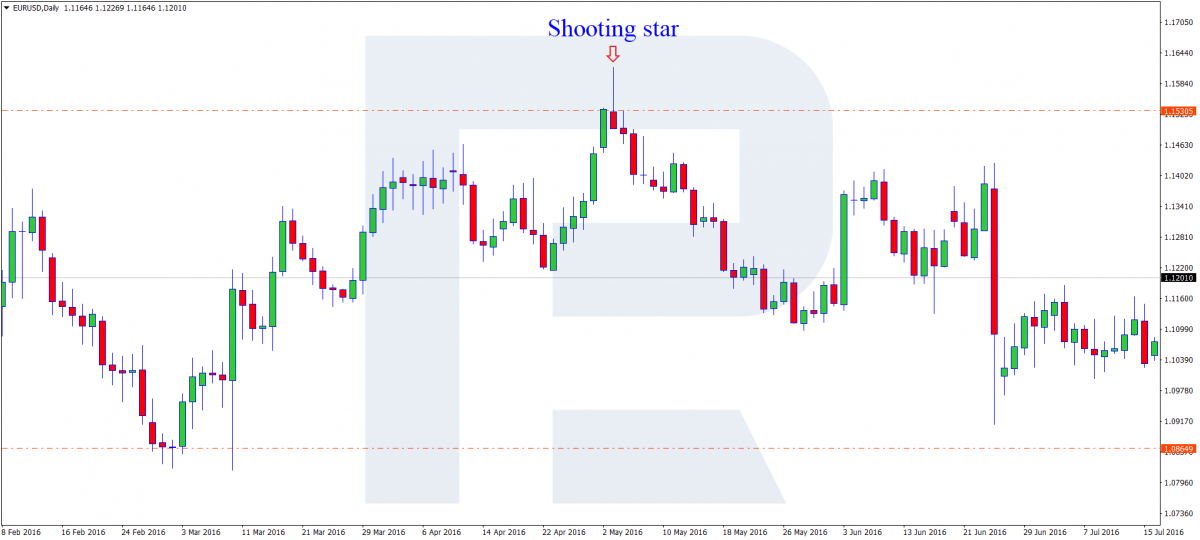
Hanging Man
In essence, it is an inverted Shooting Star. The upper shadow is minimal or lacking, the body looks small, the lower shadow looks rather long. The Hanging Man is similar to the Hammer.
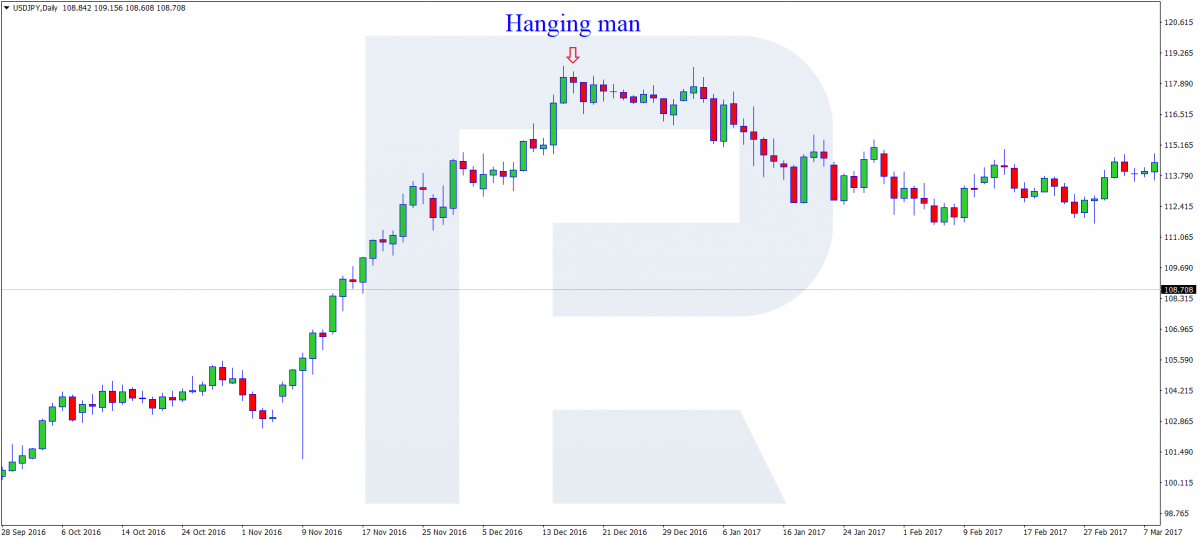
Doji
These candlesticks may form at any place of the chart and still have the name Doji. Other candlesticks are different, and we will discuss them later on.
A Doji looks like a cross or a "+". This means it has tiny shadows, and its body looks like a line because the opening and closing prices are on one line. Some Dojis have two long shadows and are called Legged Dojis; however, the signal they give is the same.
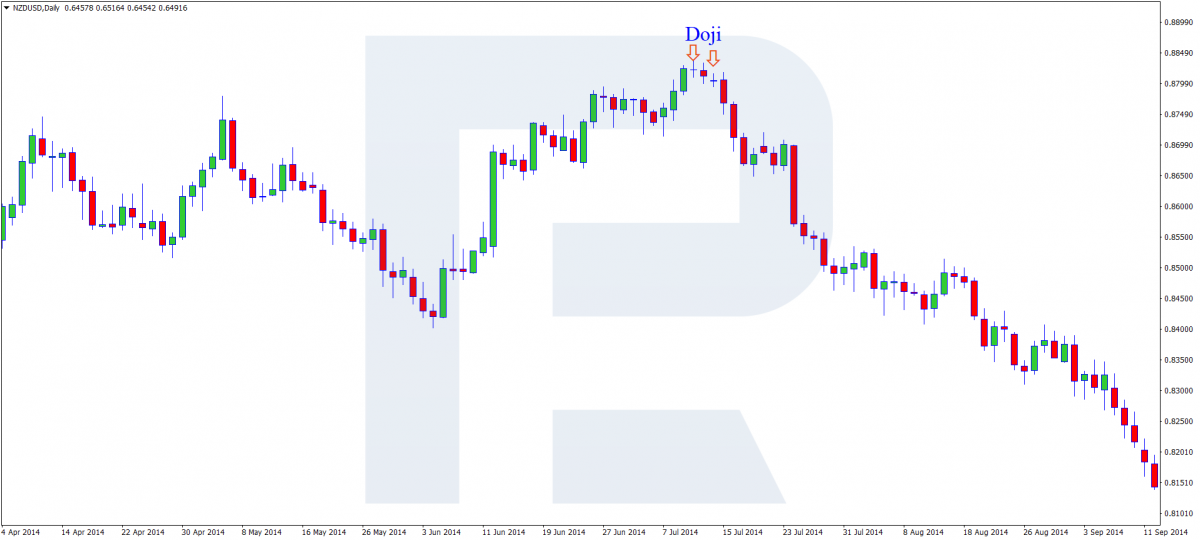
Gravestone Doji
One of the Doji variants looks as follows: a very long upward shadow, a body shaped like a thin line (or a small body), a completely lacking lower shadow.
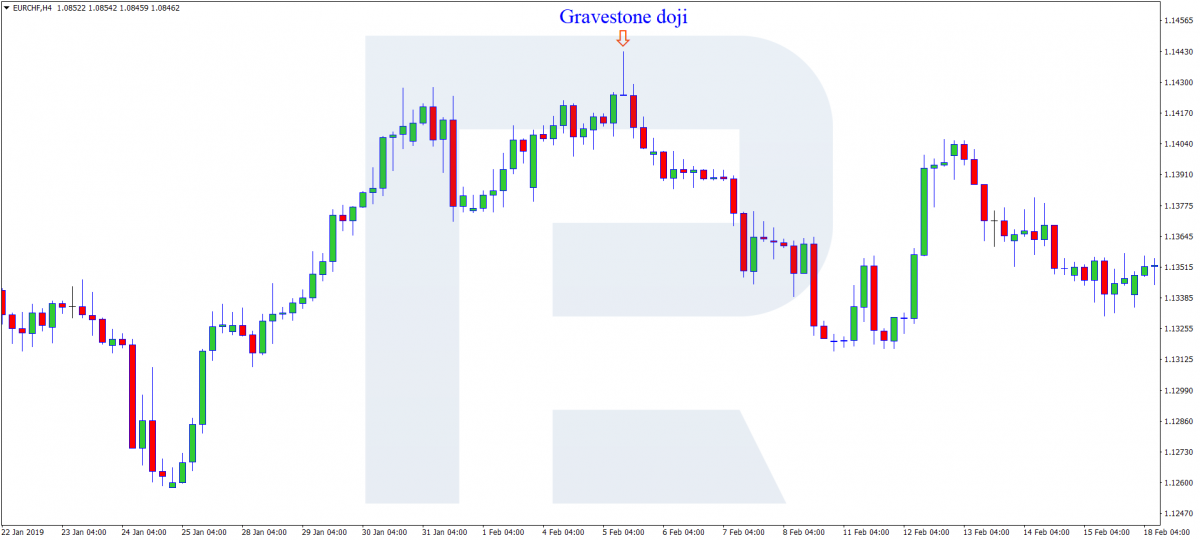
Harami
Some sources call this pattern Pregnant. It consists of two candlesticks: the first one is growing and larger than the second one; the second candlestick has its high and low fully inside the first one. Simply speaking, the first bar is large and the second one is small, set inside the first one. A type of this pattern is a Harami Cross: the second candlestick will be a Doji.
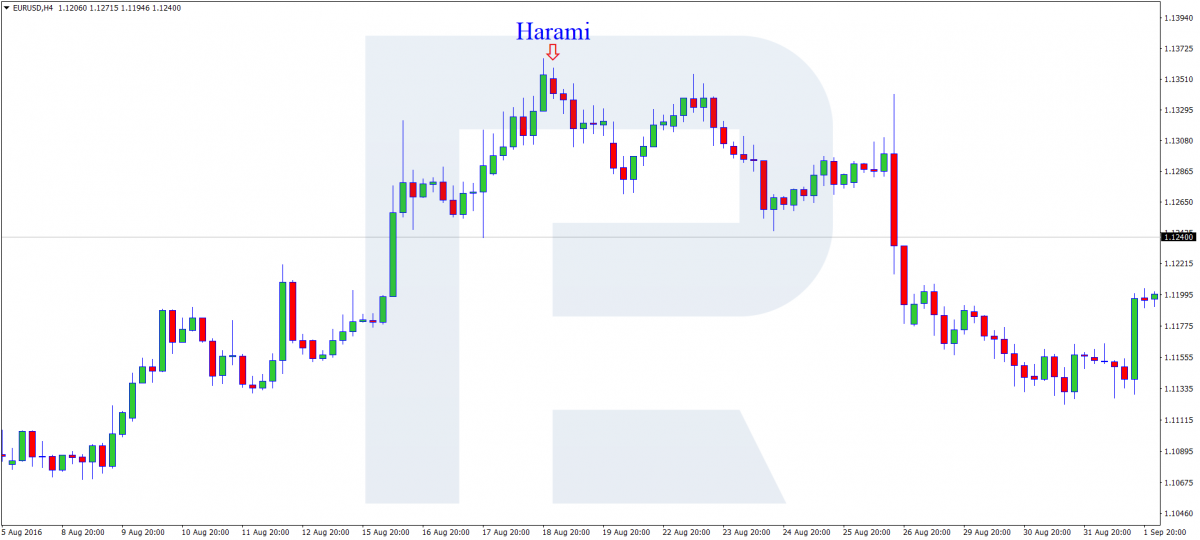
Engulfing
It may be of two types: bullish or bearish. The combination consists of two candlesticks and forms at the top of the trend. The first one is small, the second one is larger and contains the projection of the first one inside its body. In essence, it is a vice versa Harami.
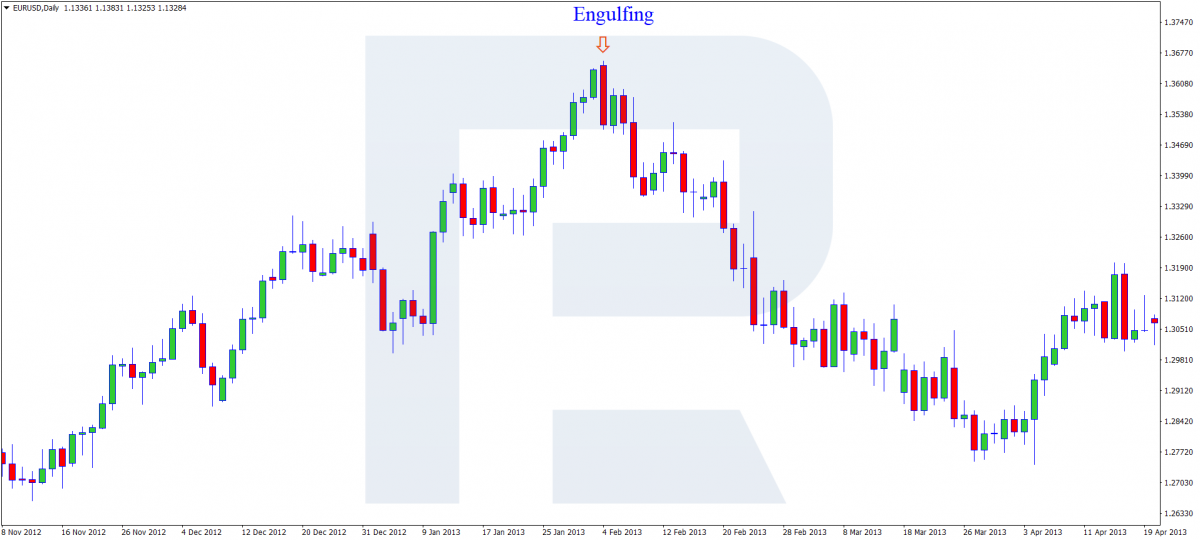
Reversal patterns at the bottom of the trend
Now - to the reversal patterns at the bottom of the trend. I should make it clear that the candlestick patterns themselves may look absolutely identical to those that form at the peak of the trend; however, they have different names. The work off is also the same: a trend reversal.
Hammer
It looks like the Hanging Man: a small body, a small or lacking upper shadow, and a long lower shadow. The only difference is that the pattern forms at the bottom of the trend.
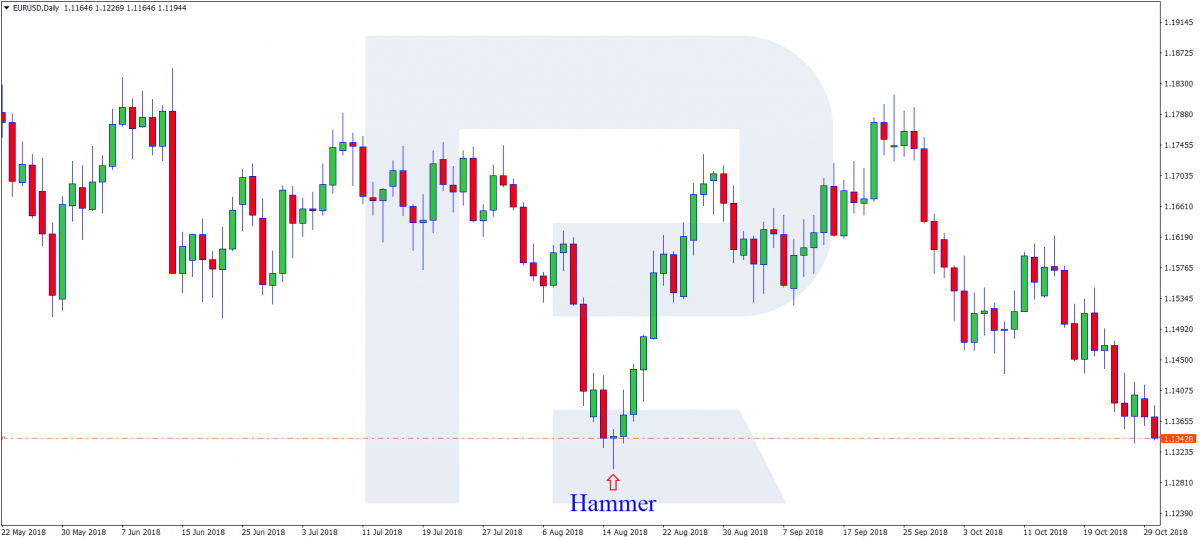
Inverted Hammer
It is similar to the Shooting Star: a long upper shadow, a small body, and an almost lacking lower shadow. Like the Hammer, it forms at the bottom of the trend.
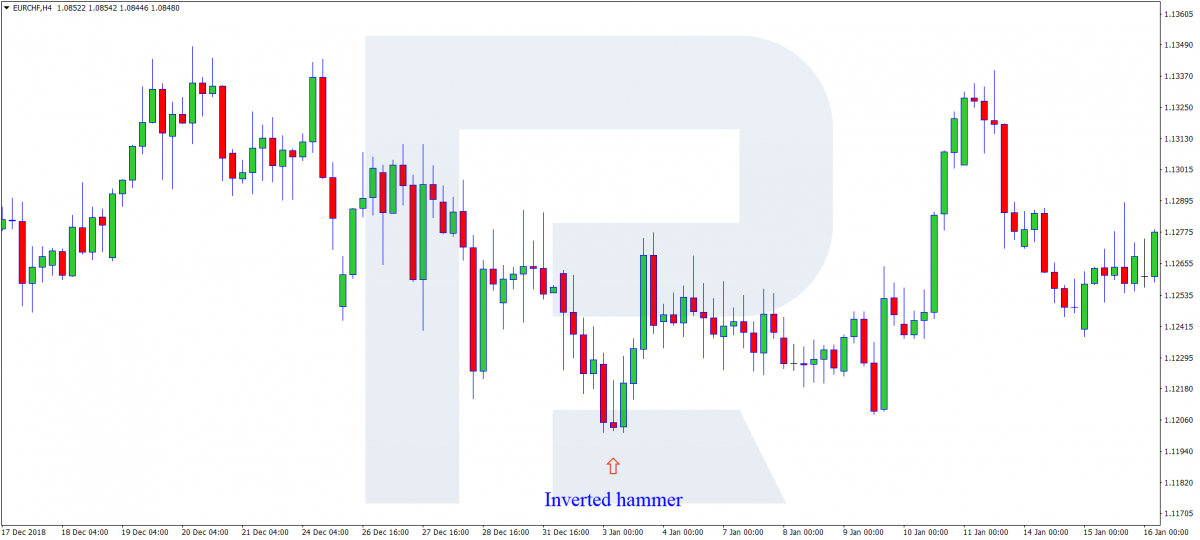
Harami
It is identical to the Harami formed at the top of the trend, only the color of the bar is different. The first large candlestick is descending. The second candlestick is the opposite. The Harami Cross also differs in the color only.
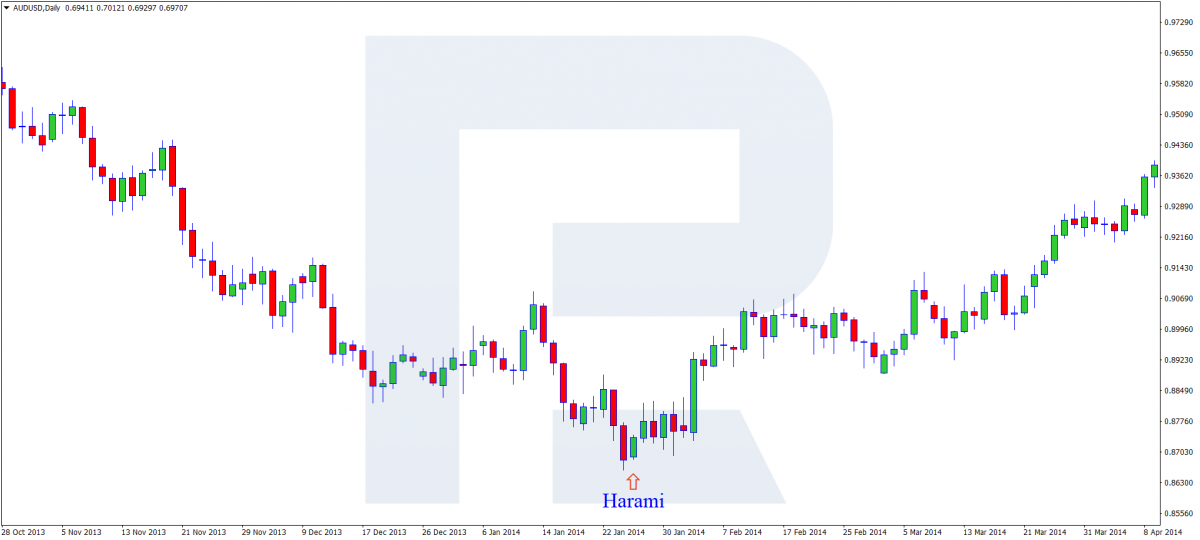
Engulfing
It consists of two candlesticks. The first descending bar has a short body, the second one is visually larger, and its body covers up the projection of the first pattern.
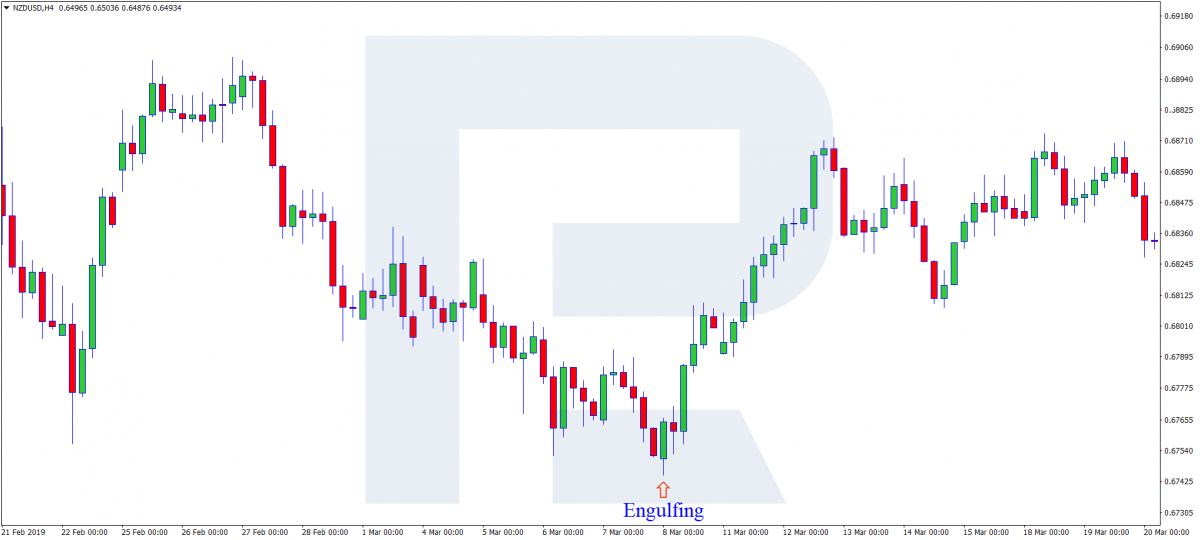
Bottom line
In this article, I have told you not about all the existing reversal patterns. There are many more of them in candlestick analysis than a beginner trader can keep in mind. I do not think it right to study everything you come across in literature. Some patterns have a lot of peculiarities and conditions of forming, which may perplex you and give false information about future price movements.
The main bar combinations are enough to trade successfully. The main trick is to study their behavior and learn how to filter false signals. As additional filters for candlestick patterns, you may use indicators or tech analysis. Reversal patterns, in their turn, are a good filter for opening positions by various strategies.











